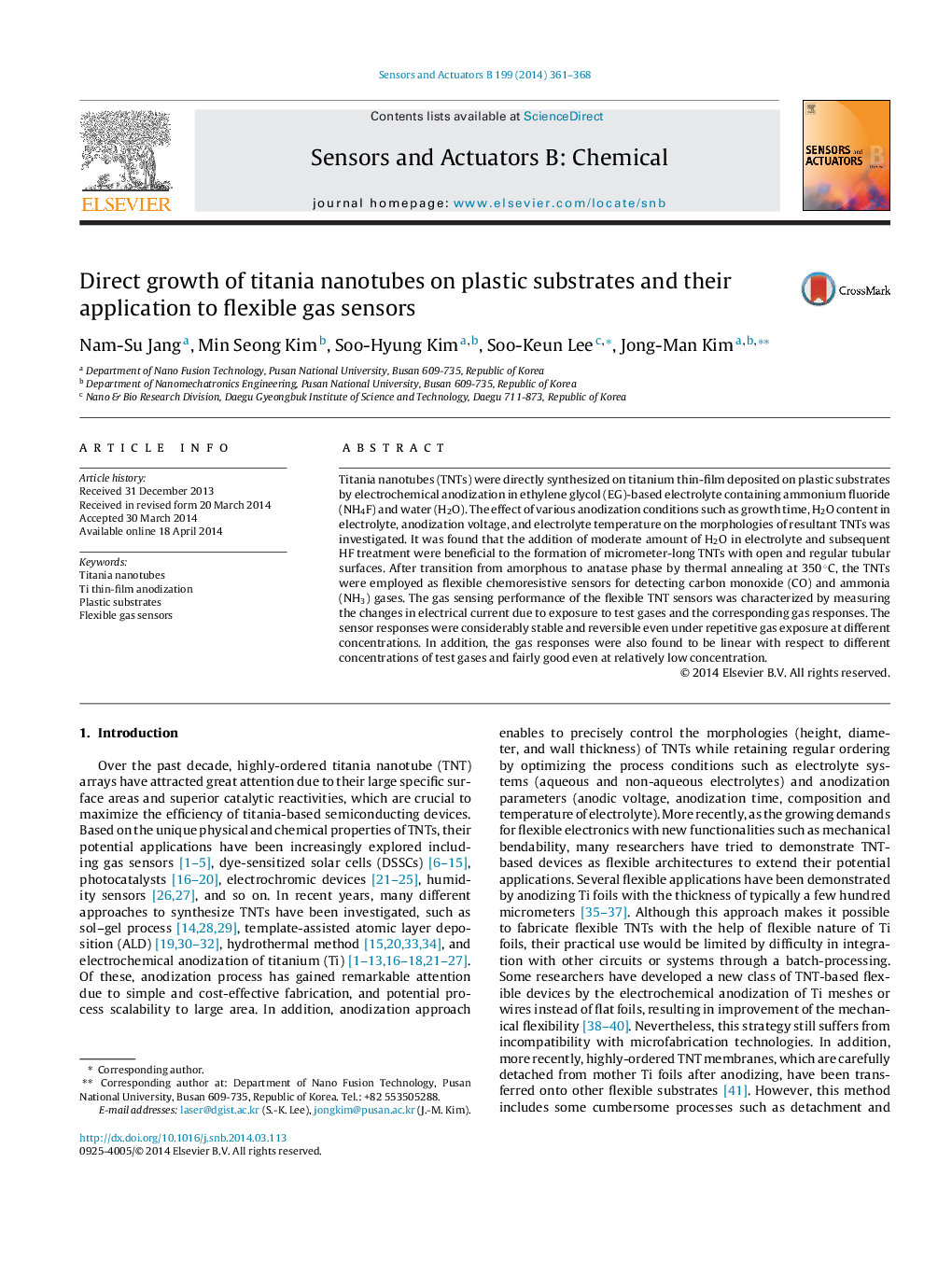| Article ID | Journal | Published Year | Pages | File Type |
|---|---|---|---|---|
| 7147045 | Sensors and Actuators B: Chemical | 2014 | 8 Pages |
Abstract
Titania nanotubes (TNTs) were directly synthesized on titanium thin-film deposited on plastic substrates by electrochemical anodization in ethylene glycol (EG)-based electrolyte containing ammonium fluoride (NH4F) and water (H2O). The effect of various anodization conditions such as growth time, H2O content in electrolyte, anodization voltage, and electrolyte temperature on the morphologies of resultant TNTs was investigated. It was found that the addition of moderate amount of H2O in electrolyte and subsequent HF treatment were beneficial to the formation of micrometer-long TNTs with open and regular tubular surfaces. After transition from amorphous to anatase phase by thermal annealing at 350 °C, the TNTs were employed as flexible chemoresistive sensors for detecting carbon monoxide (CO) and ammonia (NH3) gases. The gas sensing performance of the flexible TNT sensors was characterized by measuring the changes in electrical current due to exposure to test gases and the corresponding gas responses. The sensor responses were considerably stable and reversible even under repetitive gas exposure at different concentrations. In addition, the gas responses were also found to be linear with respect to different concentrations of test gases and fairly good even at relatively low concentration.
Keywords
Related Topics
Physical Sciences and Engineering
Chemistry
Analytical Chemistry
Authors
Nam-Su Jang, Min Seong Kim, Soo-Hyung Kim, Soo-Keun Lee, Jong-Man Kim,
